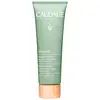What's inside
What's inside
 Key Ingredients
Key Ingredients

 Benefits
Benefits

 Concerns
Concerns

 Ingredients Side-by-side
Ingredients Side-by-side

Water
Skin ConditioningIllite
AbrasiveBentonite
AbsorbentGlycerin
HumectantVitis Vinifera Fruit Water
Skin ConditioningAcacia Senegal Gum
MaskingZinc PCA
HumectantSoy Acid
EmollientLavandula Angustifolia Oil
MaskingLinalool
PerfumingLimonene
PerfumingCitric Acid
BufferingSodium Benzoate
MaskingCupressus Sempervirens Oil
MaskingSalvia Sclarea Oil
MaskingPotassium Sorbate
PreservativeCommiphora Myrrha Oil
MaskingSantalum Album Oil
MaskingAnthemis Nobilis Flower Oil
MaskingWater, Illite, Bentonite, Glycerin, Vitis Vinifera Fruit Water, Acacia Senegal Gum, Zinc PCA, Soy Acid, Lavandula Angustifolia Oil, Linalool, Limonene, Citric Acid, Sodium Benzoate, Cupressus Sempervirens Oil, Salvia Sclarea Oil, Potassium Sorbate, Commiphora Myrrha Oil, Santalum Album Oil, Anthemis Nobilis Flower Oil
Water
Skin ConditioningKaolin
AbrasiveGlycerin
HumectantBentonite
AbsorbentArtemisia Princeps Extract
Skin ConditioningStearic Acid
CleansingPanthenol
Skin Conditioning1,2-Hexanediol
Skin ConditioningIllite
AbrasiveArtemisia Montana Leaf Powder
ExfoliatingCamellia Sinensis Leaf Water
MaskingCastanea Crenata Shell Extract
Skin ConditioningOriganum Vulgare Leaf Extract
Skin ConditioningChamaecyparis Obtusa Leaf Extract
Skin ConditioningSalix Alba Bark Extract
AstringentAvena Sativa Kernel Extract
AbrasiveCynara Scolymus Leaf Extract
Skin ConditioningPortulaca Oleracea Extract
Skin ConditioningCinnamomum Cassia Bark Extract
MaskingScutellaria Baicalensis Root Extract
AstringentMontmorillonite
AbsorbentCalcite
Skin ConditioningPhaseolus Angularis Seed Powder
Canadian Colloidal Clay
Skin ConditioningHydrogenated Lecithin
EmulsifyingBeta-Glucan
Skin ConditioningMethylpropanediol
SolventAlgin
MaskingMagnesium Aluminum Silicate
AbsorbentCetyl Alcohol
EmollientButylene Glycol
HumectantXanthan Gum
EmulsifyingAllantoin
Skin ConditioningTromethamine
BufferingPolyquaternium-51
Skin ConditioningEthylhexylglycerin
Skin ConditioningWater, Kaolin, Glycerin, Bentonite, Artemisia Princeps Extract, Stearic Acid, Panthenol, 1,2-Hexanediol, Illite, Artemisia Montana Leaf Powder, Camellia Sinensis Leaf Water, Castanea Crenata Shell Extract, Origanum Vulgare Leaf Extract, Chamaecyparis Obtusa Leaf Extract, Salix Alba Bark Extract, Avena Sativa Kernel Extract, Cynara Scolymus Leaf Extract, Portulaca Oleracea Extract, Cinnamomum Cassia Bark Extract, Scutellaria Baicalensis Root Extract, Montmorillonite, Calcite, Phaseolus Angularis Seed Powder, Canadian Colloidal Clay, Hydrogenated Lecithin, Beta-Glucan, Methylpropanediol, Algin, Magnesium Aluminum Silicate, Cetyl Alcohol, Butylene Glycol, Xanthan Gum, Allantoin, Tromethamine, Polyquaternium-51, Ethylhexylglycerin
 Reviews
Reviews

Ingredients Explained
These ingredients are found in both products.
Ingredients higher up in an ingredient list are typically present in a larger amount.
Bentonite is an aluminium phyllosilicate clay with great absorbent properties. The name 'bentonite' comes from the area where the largest source is found: Fort Benton, Wyoming.
As a clay, bentonite is often used to absorb excess oil and provide exfoliation. It has also been shown to have some antibacterial and anti-inflammatory properties. Studies show bentonite was effective at calming dermatitis from poison ivy and in diaper dermatitis of infants. Bentonite has also been shown to act as a barrier against toxic compounds on your skin.
Sunscreens containing bentonite display higher water resistance and stay on the skin for much longer. The sunscreens containing bentonite also show higher potency and UV light absorbtion.
Bentonite is naturally created from volcanic ash and several natural weathering/hydrothermal processes.
A common usage of bentonite is removing excess protein from white wines. Bentonite contains a property of being able to absorb large amounts of protein from aqueous solutions.
Phyllosilicate clay has a structure formed by sheets.
Learn more about BentoniteGlycerin is already naturally found in your skin. It helps moisturize and protect your skin.
A study from 2016 found glycerin to be more effective as a humectant than AHAs and hyaluronic acid.
As a humectant, it helps the skin stay hydrated by pulling moisture to your skin. The low molecular weight of glycerin allows it to pull moisture into the deeper layers of your skin.
Hydrated skin improves your skin barrier; Your skin barrier helps protect against irritants and bacteria.
Glycerin has also been found to have antimicrobial and antiviral properties. Due to these properties, glycerin is often used in wound and burn treatments.
In cosmetics, glycerin is usually derived from plants such as soybean or palm. However, it can also be sourced from animals, such as tallow or animal fat.
This ingredient is organic, colorless, odorless, and non-toxic.
Glycerin is the name for this ingredient in American English. British English uses Glycerol/Glycerine.
Learn more about GlycerinIllite is an exfoliant.
Water. It's the most common cosmetic ingredient of all. You'll usually see it at the top of ingredient lists, meaning that it makes up the largest part of the product.
So why is it so popular? Water most often acts as a solvent - this means that it helps dissolve other ingredients into the formulation.
You'll also recognize water as that liquid we all need to stay alive. If you see this, drink a glass of water. Stay hydrated!
Learn more about Water